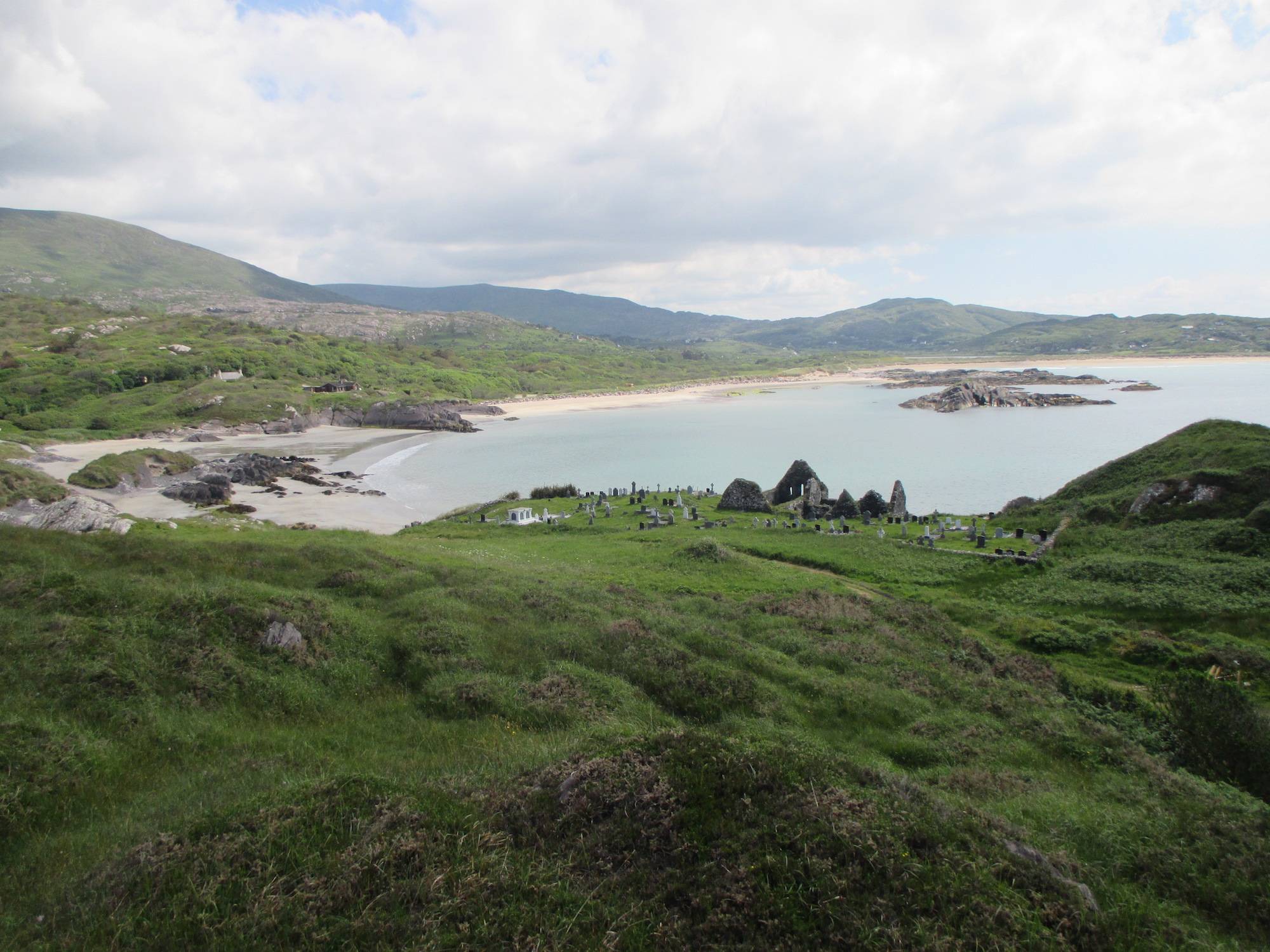The Park
Although Derrynane was never one of the great estates of Kerry, the grounds around the house were developed with care by several generations of the O’Connell family. Plantations and garden walks were laid out in the eighteenth and nineteenth centuries, principally north and west of the house. Some features of the demesne are strongly associated with Daniel O’Connell including the old Summer House, to the west of Derrynane House, which he used for quiet study and relaxation.
The main area of the gardens today, set inland and to the north of the house, can be reached under the road which adds greatly to their charm.
In recent years overgrown paths and steps have been cleared and the pleasant old walks restored. The gardens lie in a relatively sheltered valley, although the locality as a whole is exposed to the prevailing southwesterly winds, which limit the growth of shrubs and trees. On the other hand the winters are very mild, so that, like other well-known gardens of Kerry and west Cork such as Rossdohan and Ilnacullin, frost-sensitive trees and shrubs flourish. For this reason, as part of the National Botanical Collection, plants from South America have been established here.
Most of the old demesne of Derrynane is now included in Derrynane National Historic Park under the management of the National Historic Properties Service of the Office of Public Works. Derrynane National Historic Park includes nearly 1.5km of sandy and rocky shoreline. Southeast of the house is a long strand backed by sand-dunes, which are rich in natural plant and animal life. Madder, Hoary Rock-Cress, Sea Bindweed, and Chaffweed are some of the more interesting plant species. The dunes are liable to erosion by wind blow and storm damage. Because of this, extensive areas of the dunes have been planted with Marram grass to stabilise the bare areas of sand and se defences have been built to prevent erosion by high tides and storms.
Treacherous currents can occur along the long strand and swimming is the only advisable on the more sheltered beach further west between Abbey Island and the long strand. A lifeguard is on duty at this beach during the summer months. The marshy ground and lagoons east of the house as well as the tidal flats or salt marsh behind the dunes provide sanctuary and feeding for many species of wader and wildfowl. These include the Great Northern Diver, the Little Grebe, the Gannet, the Shag, and the Grey Heron.
Abbey Island, nearly forty hectares in extent, is only a few metres from the mainland and can be reached on foot across the sand except at high spring tides. From the rough path around the island, there are fine views of the mountains, sea coast, and offshore islands including the Skellig Rocks. Great care should be taken when walking around the island, however, as there are no protective walls or fences near the cliffs on the southern part of the island, and the path is not suitable for small children.
Heath is the main vegetation of the island although there is some grassland close to Ahamore Abbey. These plant communities are adapted to the exposure to the strong salt-laden southwesterly winds. Within the heathlands, the Kerry Lily (Simethis planifolia) is present. Abbey Island is only one of three locations on which this plant grows in Ireland, and it should, therefore, never be picked or uprooted. Outside of Ireland, it is found on the western seaboard of Europe and in the western Mediterranean region. Low growing juniper bushes also grow in the heath and can also be seen on the rocks and headlands just above the high water level.
I want the calm and quiet of my loved native hills – the bracing air purified as it comes over the world of waters, the cheerful exercise, the majestic scenery of these awful mountains… Oh! These are the scenes to revive all forces of natural strength – to give new energy to the human mind and raise the thoughts above the grovelling strife of individual interests. Do not tear me from this spot until I have enjoyed some of its renovating effects.
– Daniel O’Connell




